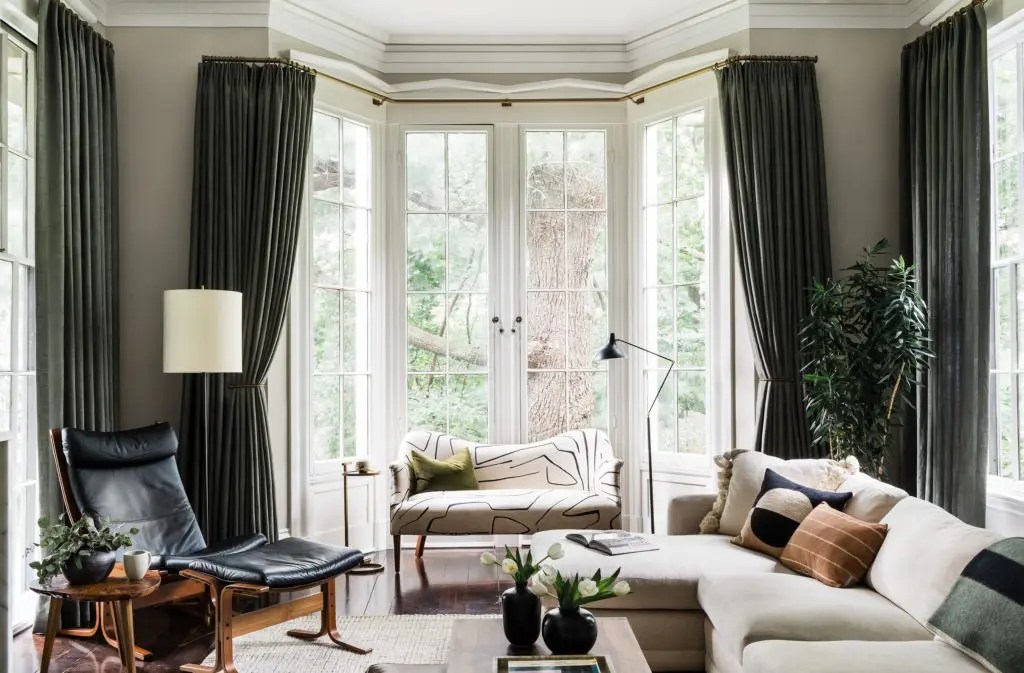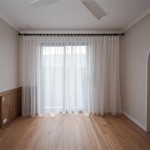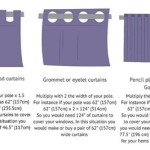Selecting the Ideal Curtains for Your Living Room
The living room serves as a central hub for many homes, a space for relaxation, entertainment, and often, social gatherings. Consequently, the selection of appropriate window treatments, specifically curtains, plays a crucial role in shaping the room's ambiance, functionality, and overall aesthetic. Choosing the right type of curtains involves considering various factors, including light control, privacy, insulation, style, and budget. This article provides a comprehensive overview of different curtain types and their suitability for living rooms, offering guidance to inform the purchasing decision.
Understanding the Functionality of Living Room Curtains
Curtains offer more than just decorative appeal; they serve several essential functions within a living room. These functions directly influence the comfort and usability of the space. Therefore, a clear understanding of these functional aspects is paramount when selecting curtains.
Light Control: One of the primary functions of curtains is to regulate the amount of natural light entering the room. Different fabrics and styles offer varying degrees of light control. Sheer curtains allow diffused light to filter through, creating a soft and airy atmosphere. Blackout curtains, conversely, block out nearly all external light, ideal for home theaters or individuals sensitive to light. Dim-out curtains provide a middle ground, reducing light intensity while still allowing some natural illumination. The choice depends on the desired level of brightness and the room's orientation relative to the sun.
Privacy: Curtains act as a visual barrier, preventing outsiders from seeing into the living room. The level of privacy offered depends on the fabric's opacity and the time of day. During daylight hours, even relatively sheer curtains offer a degree of privacy, as the interior is usually darker than the exterior. However, at night, when interior lights are on, thicker fabrics or lined curtains are necessary to maintain privacy. Consider the proximity of neighboring buildings and the level of street activity when determining the required opacity.
Insulation: Curtains can contribute to energy efficiency by providing insulation against heat and cold. Thick, tightly woven fabrics, especially those with thermal linings, can help to reduce heat loss during the winter and prevent heat gain during the summer. This can translate into lower energy bills and a more comfortable living environment. Layering curtains, such as combining sheer curtains with heavier drapes, can further enhance insulation.
Acoustics: In addition to thermal insulation, certain types of curtains can also improve the acoustics of a living room. Thick fabrics, such as velvet or wool, absorb sound waves, reducing echoes and reverberations. This can be particularly beneficial in rooms with hard surfaces, such as tile or hardwood floors, which tend to amplify sound. Curtains can help to create a more comfortable and quieter living space, especially for activities such as watching television or having conversations.
Exploring Different Curtain Styles and Fabrics
The aesthetic impact of curtains on a living room is undeniable. The style and fabric choice significantly contribute to the overall design and ambiance of the space. A wide range of styles and fabrics are available, each with its unique characteristics and suitability for different design preferences.
Sheer Curtains: Sheer curtains are made from lightweight, translucent fabrics such as voile, chiffon, or lace. They allow ample natural light to filter through, creating a bright and airy atmosphere. Sheer curtains are ideal for living rooms where privacy is not a primary concern or where they are used in conjunction with heavier drapes for layering. They add a touch of elegance and sophistication to any space and are particularly well-suited for light and airy décor styles.
Panel Curtains: Panel curtains are the most common type of curtains, consisting of individual fabric panels that hang from a rod. They are available in a wide variety of fabrics, colors, and patterns, offering versatility to suit any design aesthetic. Panel curtains can be easily customized to fit different window sizes and can be hung using various methods, such as grommets, rod pockets, or pleats. Their simplicity and adaptability make them a popular choice for living rooms.
Rod Pocket Curtains: Rod pocket curtains have a sewn-in pocket at the top that slides directly onto the curtain rod. This creates a gathered or ruched effect, which can add a touch of traditional charm to a living room. Rod pocket curtains are relatively easy to install and are a cost-effective option. However, they can be more difficult to open and close than other types of curtains, such as grommet or pleated curtains.
Grommet Curtains: Grommet curtains have metal rings (grommets) inserted along the top edge of the fabric, through which the curtain rod is threaded. This creates clean, modern lines and allows the curtains to glide easily along the rod. Grommet curtains are a popular choice for contemporary living rooms and offer a sleek and streamlined look.
Pleated Curtains: Pleated curtains feature folds or pleats at the top, which give them a more formal and tailored appearance. There are various types of pleats, including pinch pleats, goblet pleats, and box pleats, each creating a different visual effect. Pleated curtains are often used in traditional or formal living rooms, adding a touch of elegance and sophistication. They require more fabric than other types of curtains and are typically more expensive.
Blackout Curtains: Blackout curtains are made from thick, opaque fabrics or have a special blackout lining that blocks out nearly all external light. They are ideal for living rooms that double as home theaters or for individuals who are sensitive to light. Blackout curtains can also help to improve sleep quality by creating a dark and restful environment. They are available in a variety of styles and colors to suit different décor preferences.
Linen Curtains: Linen is a natural fabric known for its durability, breathability, and subtle texture. Linen curtains offer a relaxed and casual look, making them a popular choice for bohemian or coastal-inspired living rooms. They allow some light to filter through, creating a soft and inviting atmosphere. Linen curtains are relatively easy to care for and can be machine washed.
Velvet Curtains: Velvet is a luxurious fabric known for its soft pile and rich color. Velvet curtains add a touch of opulence and drama to any living room. They are excellent at blocking out light and providing insulation, making them a practical as well as stylish choice. Velvet curtains require special care and should be professionally cleaned.
Considering Color, Pattern, and Length
Beyond style and fabric, the color, pattern, and length of curtains play a significant role in shaping the overall aesthetic of the living room. These elements should be carefully considered to create a cohesive and visually appealing space.
Color: The color of the curtains should complement the existing color scheme of the living room. Neutral colors, such as beige, gray, or white, are versatile and can be easily integrated into any décor. Bold colors, such as blue, green, or red, can add a pop of visual interest and create a focal point. Consider the size of the room when choosing a color; lighter colors can make a small room feel larger and brighter, while darker colors can create a sense of coziness and intimacy in a larger room.
Pattern: Patterned curtains can add personality and visual interest to a living room. The choice of pattern should be guided by the overall style of the space. Geometric patterns are well-suited for modern or contemporary décor, while floral patterns are ideal for traditional or romantic styles. Consider the scale of the pattern; larger patterns can overwhelm a small room, while smaller patterns may get lost in a larger space. If the living room already features patterned furniture or rugs, consider choosing curtains with a subtle or neutral pattern to avoid a cluttered look.
Length: The length of the curtains can significantly impact the overall appearance of the living room. There are three main options: floor-length, puddle-length, and sill-length. Floor-length curtains extend to the floor, creating a clean and elegant look. Puddle-length curtains extend slightly beyond the floor, creating a more romantic and dramatic effect. Sill-length curtains end at the windowsill, which can be a practical choice for kitchens or bathrooms but is generally not recommended for living rooms. The ideal length depends on the style of the room and the desired effect. For a more formal look, floor-length curtains are recommended. For a more relaxed and casual look, puddle-length curtains can be used. Ensure accurate measurements are taken before purchasing curtains to ensure a proper fit.
Ultimately, the selection of curtains for a living room is a multifaceted process that requires careful consideration of various factors. By understanding the functional needs of the space and exploring different styles, fabrics, colors, patterns, and lengths, it is possible to find the perfect curtains to enhance the beauty, comfort, and functionality of the living room.

15 Best Living Room Curtain Ideas Window Treatments

15 Best Living Room Curtain Ideas Window Treatments

10 Easy Tips On How To Choose Curtains For Living Room By Livspace

Living Room Curtains Ideas Tips I Modern Traditional

30 Beautiful Living Room Curtain Ideas And Window Treatments

8 Modern Curtain Designs For Living Room Designcafe

How To Choose Curtains For Living Room Designcafe

8 Modern Curtain Designs For Living Room Designcafe

10 Easy Tips On How To Choose Curtains For Living Room By Livspace
:strip_icc()/134136257_1156706701411203_9050681446200946902_n-73e5fc8ff4ba4d6990b993d5f21c3318.jpg?strip=all)
22 Living Room Curtain Ideas For Your Home








